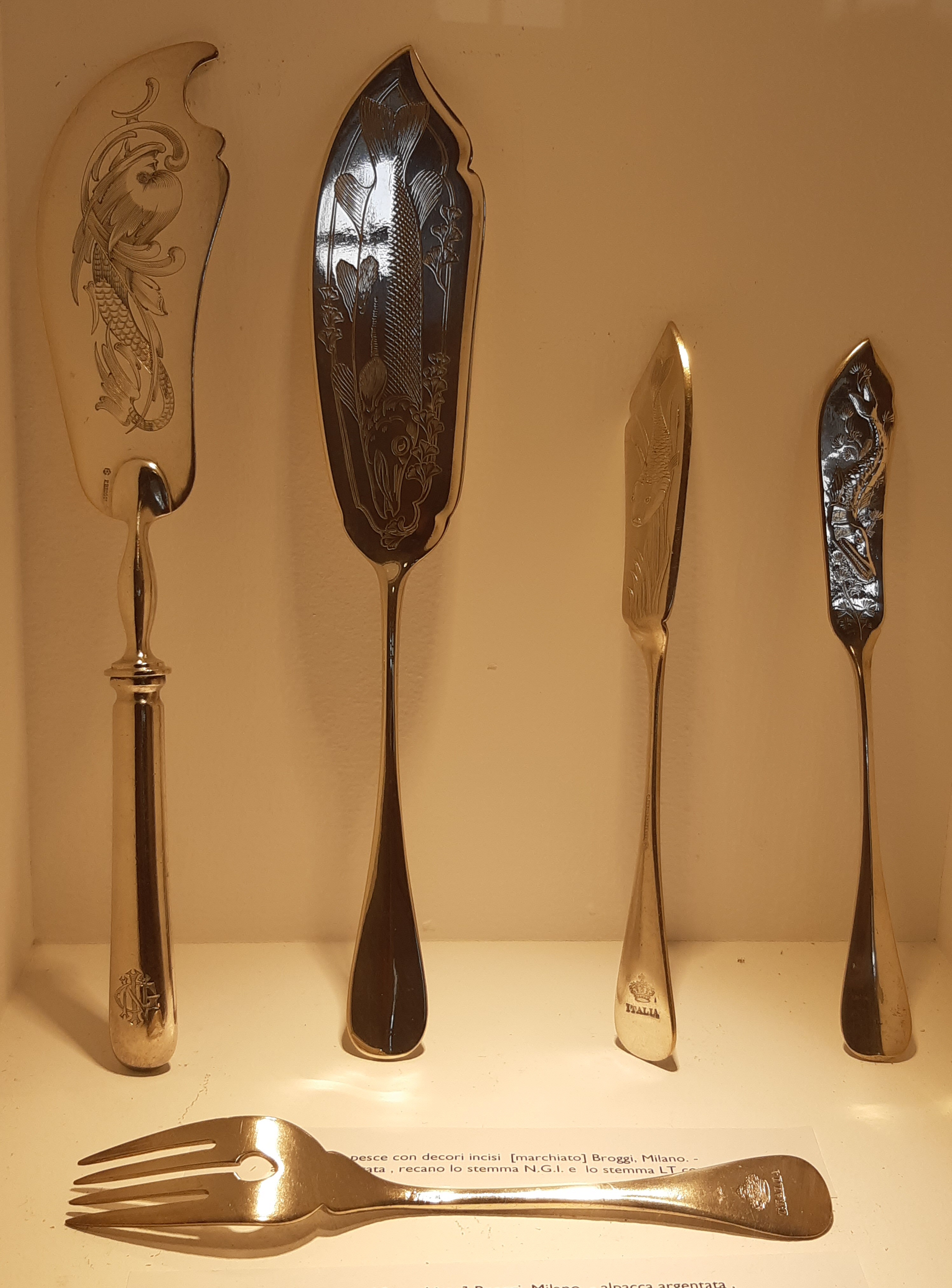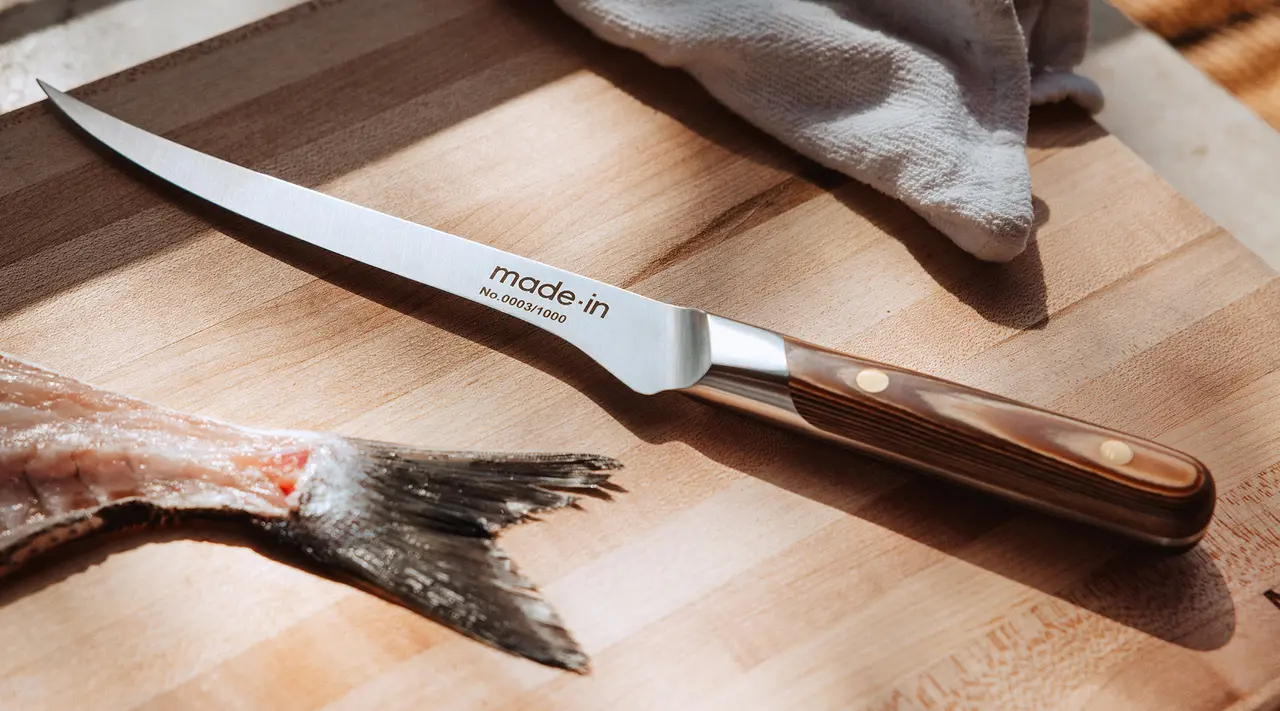Discover the Necessary Features to Seek in a Top-Quality Fish Knife
When choosing a fish knife, several crucial attributes require attention. The blade product significantly influences toughness and sharpness, while versatility plays a crucial role in accuracy. In addition, the manage design affects convenience throughout extended usage. Side retention and security functions are likewise essential for useful usage. Understanding these aspects will certainly assist customers towards making an educated selection, yet the nuances of their significance may not be promptly clear.
Blade Product and Construction
The performance of a fish knife largely depends upon its blade product and construction - fish knife. Premium fish blades usually feature blades made from stainless-steel, high-carbon steel, or a combination of both. Stainless-steel is preferred for its rust resistance and low upkeep, making it perfect for freshwater and saltwater settings. High-carbon steel, while susceptible to rusting, offers superior intensity and side retention, appealing to those who prioritize reducing efficiency
The building and construction of the blade additionally plays a vital role in its effectiveness. Full-tang blades, which extend the entire length of the deal with, provide boosted stamina and equilibrium. On the other hand, partial-tang blades may endanger toughness. Furthermore, the density of the blade ought to be thought about, as thinner blades enable a lot more precise cuts, necessary for delicate fish filleting. Ultimately, a sound blade, making use of the right materials, is basic for achieving the finest outcomes when preparing fish.
Blade Adaptability and Size
Blade flexibility and length are crucial elements that substantially influence the efficiency of a fish knife. An adaptable blade permits for accurate cuts and the capacity to maneuver around bones and skin, making it necessary for filleting fish effectively. The correct amount of flexibility can boost control, making it possible for the user to achieve tidy, smooth cuts with minimal initiative.
In regards to size, fish knives normally vary from 6 to 9 inches. A longer blade is advantageous for larger fish, providing the reach needed for reliable filleting. Alternatively, a much shorter blade offers maneuverability, making it appropriate for smaller sized fish or intricate jobs.
Inevitably, the selection of versatility and length must straighten with the particular fishing needs and preferences of the individual. A well-balanced combination of these qualities makes certain optimal performance, boosting the overall fish prep work experience.
Manage Layout and Convenience
A properly designed handle is important for making sure convenience and control when making use of a fish knife. The take care of need to fit firmly in the hand, permitting for a company hold during elaborate tasks such as filleting or skinning fish. Materials like rubber, timber, or composite supply different levels of convenience and traction, influencing the customer's experience.
Ergonomic attributes are also essential; shapes that follow the all-natural shape of the hand can minimize fatigue during long term use. In addition, the deal with's structure plays a significant duty in avoiding slippage, specifically when working with damp hands.
Weight circulation is another aspect that adds to the overall balance of the knife, improving ability to move. A comfortable manage layout not just improves effectiveness but also advertises safety, as a safe grip lessens the threat of mishaps (fish knife). Inevitably, a thoughtful handle design can substantially elevate the efficiency of a fish knife in culinary applications
Side Retention and Developing
While using a fish knife, preserving a sharp side is crucial for accomplishing tidy cuts and specific filleting. A quality fish knife ought to exhibit outstanding edge retention, allowing it to stay sharp through multiple uses. This characteristic is frequently figured out by the type of steel utilized in the blade; high-carbon stainless-steel is often liked because of its balance of hardness and rust resistance.

Safety Attributes and Sheath Options
Countless safety and security functions and sheath alternatives are necessary considerations when selecting a fish knife. A safe and ergonomic take care of lowers the threat of slips throughout use, improving user safety. Distinctive grasps and finger guards better avoid mishaps, enabling better control while filleting fish.
Furthermore, a blunt tip can lessen the risk of puncture injuries, making it a more secure choice for newbie customers.
Sheath alternatives likewise play a critical duty in security. A well-designed sheath protects the blade, preventing accidental cuts when the knife is stored or transferred. Sheaths made from resilient products, such as nylon or difficult plastic, offer added security versus environmental components.
Some sheaths come with belt clips or loops, making certain the knife is quickly available while staying safe and secure. Inevitably, focusing on safety attributes and sheath choices adds significantly to the overall capability and customer experience of a fish knife.
Regularly Asked Concerns
What Is the most effective Brand Name for Fish Blades?
The most effective brand name for fish blades typically differs by preference, yet renowned names like Wüsthof, Victorinox, and Shun are frequently recommended for their workmanship, sturdiness, and sharpness, making them top choices amongst culinary lovers and professionals alike.
Can Fish Blades Be Utilized for Other Kinds Of Fish?
Fish blades can certainly be used for various other kinds of fish. Their style and sharpness make them functional sufficient for various fish species, boosting the total experience of filleting and preparing various kinds of seafood.

Just how Do I Tidy and Keep My Fish Knife?
To clean and maintain a fish knife, rinse it with warm water after use, gently scrub with light soap, completely dry thoroughly, and shop in a safety sheath to stop damages and rust. Routine honing is vital.
Are There Fish Blades Particularly for Left-Handed Users?
Yes, there are fish knives developed specifically for left-handed users. These knives feature reversed blade angles and ergonomic takes care of, guaranteeing comfort and performance for left-handed people while filleting and preparing fish. Quality alternatives are offered from different suppliers.
What Is the Price Range for Top Quality Fish Blades?
Quality fish blades generally vary from $20 to $150, depending on products, brand name credibility, and craftsmanship. Higher-end options may feature customized designs and exceptional functional designs, while affordable options still use satisfactory efficiency for laid-back individuals.
The performance of a fish knife mainly hinges on its blade material and building. High-quality fish knives usually feature blades made from stainless steel, high-carbon steel, or a mix of both. Blade flexibility and website length are essential factors that greatly affect the efficiency of a fish knife. Fish blades can indeed be utilized for various other types of fish. These knives include reversed blade angles and ergonomic takes care of, making sure comfort and efficiency for left-handed people while filleting and preparing fish.